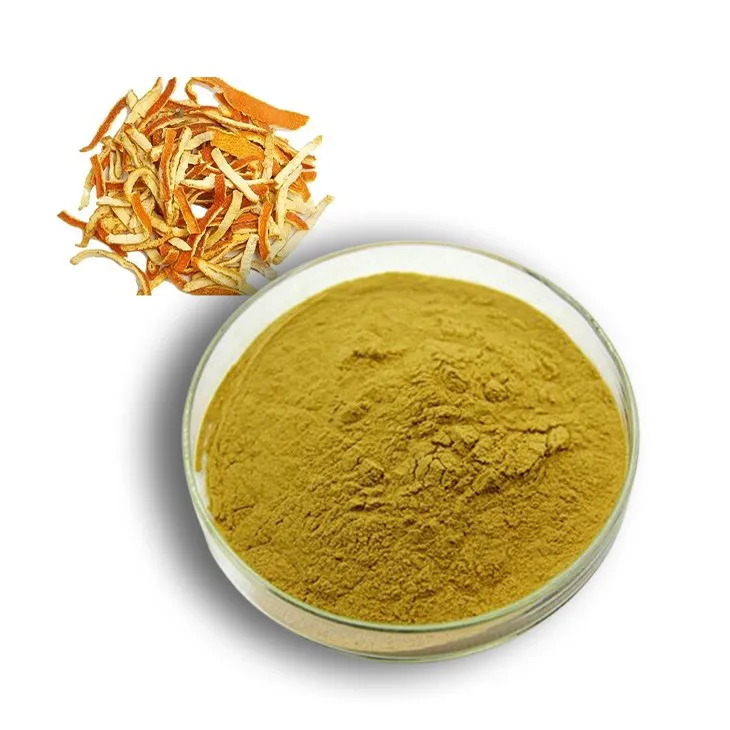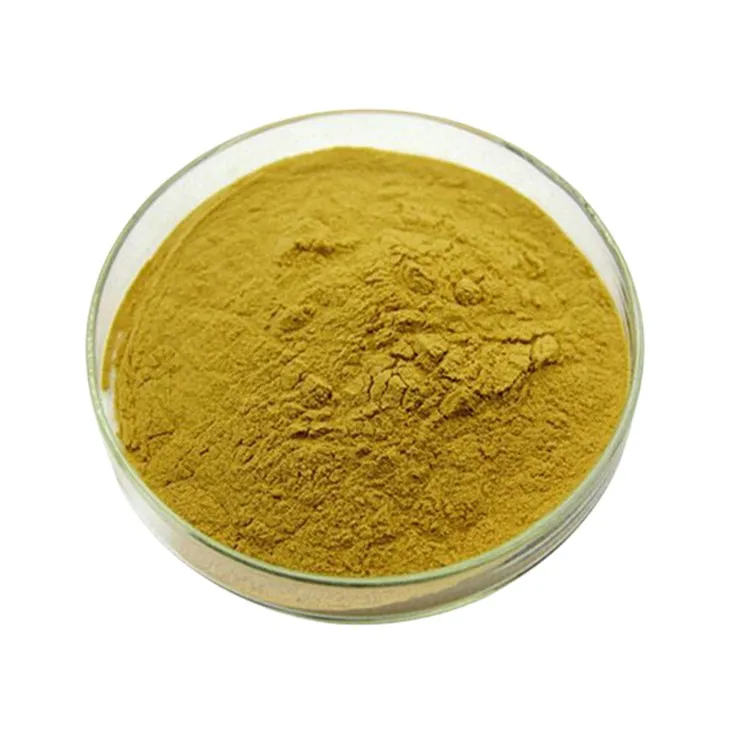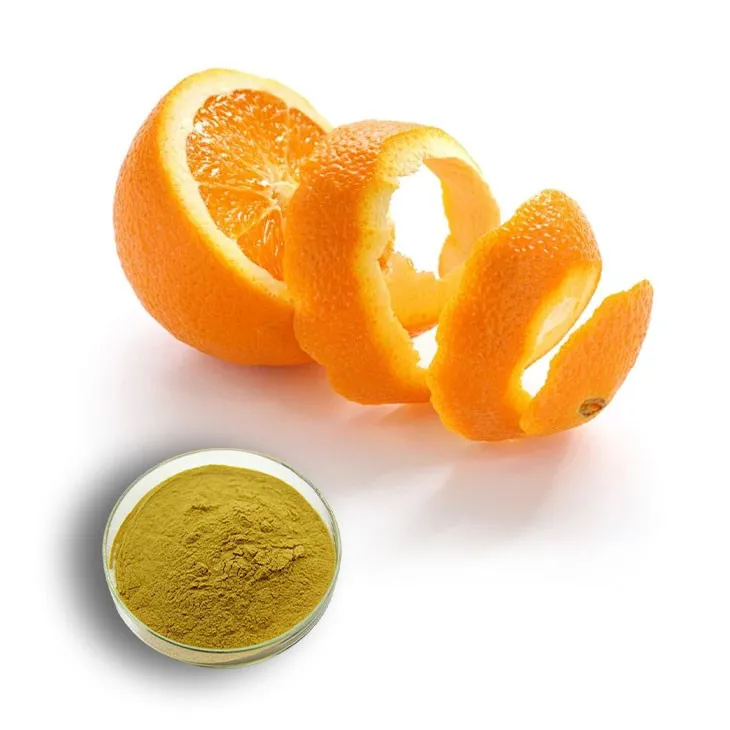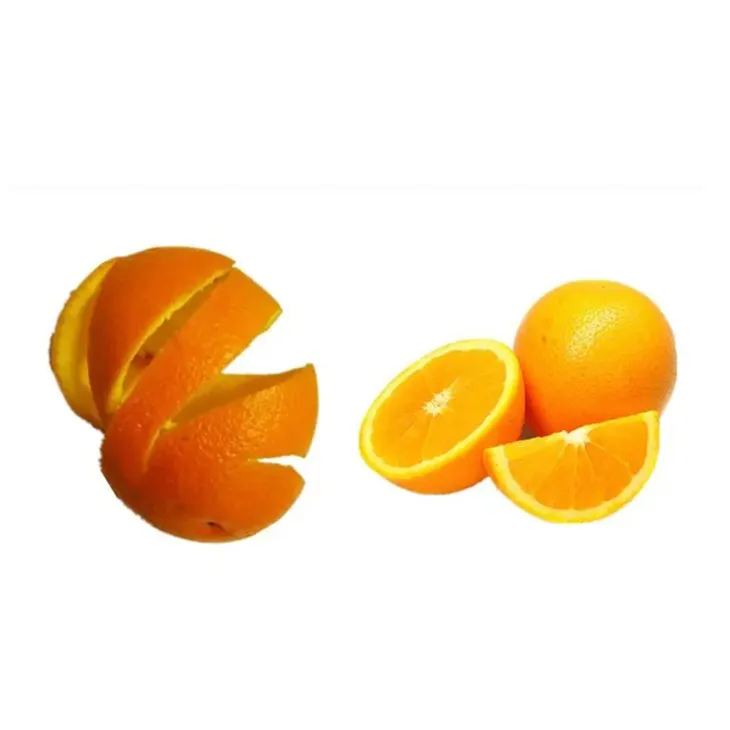- 0086-571-85302990
- sales@greenskybio.com
Extraction of Hesperidin by Steam Distillation.
2024-11-28

1. Introduction
Hesperidin is a flavanone glycoside that is predominantly found in citrus fruits, especially in orange peels. It has attracted significant attention in recent years due to its numerous health - promoting properties, such as antioxidant, anti - inflammatory, and anti - atherosclerotic effects. Steam distillation is one of the methods used for the extraction of Hesperidin from natural sources, particularly from orange peels. This article aims to provide a comprehensive understanding of the process, principles, advantages, and applications of steam distillation for Hesperidin extraction.

2. Principles of Steam Distillation
2.1 Vapor - Liquid Equilibrium
Steam distillation is based on the principle of vapor - liquid equilibrium. When steam is passed through the orange peel containing hesperidin, the steam and the volatile components of the peel form a vapor mixture. Hesperidin, being relatively non - volatile compared to some other components, is carried along with the vapor due to the mechanical action of the steam. The vapor mixture then rises and can be condensed in a condenser.
2.2 Selectivity
One of the important aspects of steam distillation is its selectivity. The method is designed in such a way that it can preferentially extract hesperidin while minimizing the extraction of unwanted components. This is achieved by carefully controlling the temperature and pressure conditions during the distillation process. Different components have different vapor pressures at a given temperature, and by adjusting these parameters, the extraction of hesperidin can be optimized.
3. The Steam Distillation Process for Hesperidin Extraction
3.1 Preparation of Orange Peels
The first step in the extraction process is the preparation of orange peels. The peels are collected from ripe oranges and are washed thoroughly to remove any dirt, pesticides, or other contaminants. They are then dried either in the sun or in a drying oven at a low temperature to reduce the moisture content. Dried peels are preferably ground into a fine powder to increase the surface area available for extraction.
3.2 Steam Generation
Next, steam is generated. This can be done using a steam generator. The steam should be of high quality, free from impurities such as particulate matter and dissolved minerals. The temperature and pressure of the steam can be adjusted according to the requirements of the extraction process.
3.3 Extraction
The dried and powdered orange peels are placed in an extraction vessel. Steam is then passed through the peels at a controlled rate. As the steam passes through the peels, it extracts hesperidin along with other volatile components. The extraction time can vary depending on factors such as the amount of peels, the quality of the steam, and the desired yield of hesperidin.
3.4 Condensation
The vapor mixture containing hesperidin and other components exits the extraction vessel and enters the condenser. In the condenser, the vapor is cooled and condensed back into a liquid phase. The condensed liquid, which contains hesperidin, is then collected in a receiver.
3.5 Separation and Purification
The collected liquid contains not only hesperidin but also other substances. To obtain pure hesperidin, separation and purification steps are required. This can be achieved through techniques such as filtration, centrifugation, and chromatography. Filtration can be used to remove any solid particles present in the liquid. Centrifugation can be employed to separate heavier components from the hesperidin - containing solution. Chromatography, such as high - performance liquid chromatography (HPLC), is a more advanced technique that can effectively separate hesperidin from other closely related compounds based on their different chemical properties.
4. Advantages of Steam Distillation for Hesperidin Extraction
4.1 Mild Operating Conditions
Steam distillation typically operates at relatively low temperatures and pressures compared to some other extraction methods. This is beneficial as it helps to preserve the integrity of hesperidin. High - temperature extraction methods may cause degradation of hesperidin, leading to a loss of its bioactive properties. The mild conditions of steam distillation ensure that the extracted hesperidin retains its chemical structure and functionality.
4.2 Environmentally Friendly
Steam distillation is considered an environmentally friendly extraction method. The main reagent used is steam, which is a clean and renewable resource. There is no need for the use of harmful organic solvents, which are often used in other extraction methods. This reduces the environmental impact associated with the extraction process, such as solvent waste disposal and potential air pollution from solvent evaporation.
4.3 Cost - Effective
The equipment required for steam distillation is relatively simple and inexpensive compared to some complex extraction systems. The cost of steam generation is also relatively low, especially when using steam from a centralized steam supply system. Additionally, the absence of expensive organic solvents further reduces the overall cost of the extraction process.
5. Applications of Hesperidin Extracted by Steam Distillation
5.1 Pharmaceutical Industry
In the pharmaceutical industry, hesperidin extracted by steam distillation can be used as an active ingredient in drugs. Its antioxidant and anti - inflammatory properties make it suitable for the treatment of various diseases, such as cardiovascular diseases. Hesperidin can be formulated into tablets, capsules, or other dosage forms for oral administration.
5.2 Cosmetic Industry
The cosmetic industry also utilizes hesperidin. It can be added to skincare products, such as creams, lotions, and serums. Hesperidin's antioxidant properties help to protect the skin from free - radical damage, which can lead to premature aging. It can also improve skin elasticity and reduce skin inflammation, making it a valuable ingredient in anti - aging and skin - repair products.
5.3 Food and Beverage Industry
In the food and beverage industry, hesperidin can be used as a natural food additive. It can be added to citrus - flavored drinks, jams, and other products to enhance their flavor and provide additional health benefits. Hesperidin - enriched products are becoming increasingly popular among health - conscious consumers.6. Significance of Steam Distillation - Extracted Hesperidin in Various Industries
6.1 Meeting the Demand for Natural Products
There is a growing global demand for natural products in all the above - mentioned industries. Consumers are increasingly interested in products that are derived from natural sources and are free from synthetic chemicals. Steam - distilled hesperidin meets this demand as it is obtained from orange peels, a natural source. This makes it a preferred choice for manufacturers who want to develop natural - based products.
6.2 Innovation in Product Development
The availability of hesperidin extracted by steam distillation has also spurred innovation in product development. Researchers and product developers are exploring new ways to incorporate hesperidin into different products. For example, in the pharmaceutical industry, new drug formulations are being developed to improve the bioavailability of hesperidin. In the cosmetic industry, new product combinations are being created to enhance the skin - care benefits of hesperidin.
6.3 Contribution to Sustainable Development
As mentioned earlier, steam distillation is an environmentally friendly extraction method. The use of steam - distilled hesperidin in various industries contributes to sustainable development. It reduces the reliance on non - renewable resources and minimizes the environmental impact associated with product manufacturing. This is in line with the global trend towards more sustainable and green production processes.7. Conclusion
Steam distillation is a valuable method for the extraction of hesperidin from orange peels. It is based on the principles of vapor - liquid equilibrium and selectivity. The process involves several steps, including preparation of orange peels, steam generation, extraction, condensation, and separation and purification. Steam distillation offers several advantages, such as mild operating conditions, environmental friendliness, and cost - effectiveness. The hesperidin extracted by this method has diverse applications in the pharmaceutical, cosmetic, and food and beverage industries. Moreover, it has significant importance in meeting the demand for natural products, promoting innovation in product development, and contributing to sustainable development. Future research could focus on further optimizing the steam distillation process to improve the yield and purity of hesperidin and exploring new applications of this valuable natural compound.
FAQ:
1. What is hesperidin?
Hesperidin is a flavanone glycoside. It is mainly found in citrus fruits, especially in orange peels. It has various potential health benefits such as antioxidant, anti - inflammatory, and blood - vessel - protecting properties.
2. How does steam distillation work for hesperidin extraction?
Steam distillation works by passing steam through the orange peels which contain hesperidin. The steam heats the plant material, causing the volatile components along with hesperidin to vaporize. These vapors are then condensed back into a liquid, and the hesperidin can be separated from the other components in the resulting distillate.
3. What are the advantages of using steam distillation for hesperidin extraction?
One advantage is that it is a relatively gentle extraction method that can preserve the integrity of hesperidin. It can also be carried out at lower temperatures compared to some other extraction methods, reducing the risk of thermal degradation of the compound. Additionally, steam distillation can be scaled up relatively easily for industrial - scale extraction.
4. In which industries is the extraction of hesperidin by steam distillation important?
The food industry is one major area, as hesperidin can be used as a natural food additive for its antioxidant properties. In the pharmaceutical industry, it has potential for the development of drugs or nutraceuticals. The cosmetic industry also values hesperidin for its skin - beneficial properties, and steam - distilled hesperidin can be used in the production of skincare products.
5. Are there any limitations to steam distillation for hesperidin extraction?
Yes, one limitation is that the extraction efficiency may not be as high as some other more complex extraction techniques. Also, the purity of the extracted hesperidin may require further purification steps. Moreover, steam distillation may be more time - consuming compared to some modern extraction methods.
Related literature
- Steam Distillation and Its Applications in Natural Product Extraction"
- "Hesperidin: Properties, Extraction, and Potential Health Benefits"
- "Advanced Techniques for Hesperidin Isolation from Citrus Peels"
- ▶ Hesperidin
- ▶ citrus bioflavonoids
- ▶ plant extract
- ▶ lycopene
- ▶ Diosmin
- ▶ Grape seed extract
- ▶ Sea buckthorn Juice Powder
- ▶ Beetroot powder
- ▶ Hops Extract
- ▶ Artichoke Extract
- ▶ Reishi mushroom extract
- ▶ Astaxanthin
- ▶ Green Tea Extract
- ▶ Curcumin Extract
- ▶ Horse Chestnut Extract
- ▶ Other Problems
- ▶ Boswellia Serrata Extract
- ▶ Resveratrol Extract
- ▶ Marigold Extract
- ▶ Grape Leaf Extract
- ▶ blog3
- ▶ blog4
-
Nature's Bounty Almond Powder
2024-11-28
-
Organic Taurine Powder Suppliers.
2024-11-28
-
Bulk purchase of black pepper extract.
2024-11-28
-
Ginger extract of the best quality.
2024-11-28
-
Wholesale Passion Fruit Extract Suppliers.
2024-11-28
-
Organic Genistein, Australia.
2024-11-28
-
Sophora Flavescens Root Extract
2024-11-28
-
Citrus Aurantii Extract
2024-11-28
-
Nutmeg Extract
2024-11-28
-
Maca Extract
2024-11-28
-
Curcuma Longa Extract
2024-11-28
-
Propolis Extract Powder
2024-11-28
-
Shikone Extract
2024-11-28
-
Gynostemma pentaphyllum extract
2024-11-28
-
Panax Ginseng Leaf Extract
2024-11-28
-
Eyebright Extract
2024-11-28





















